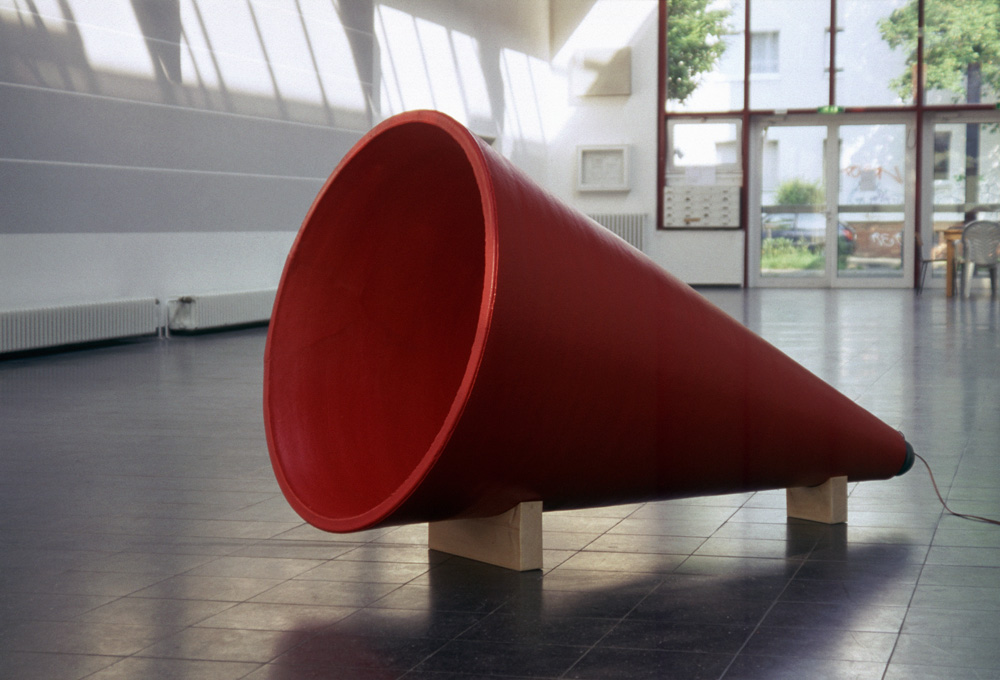
210 X 112 X 112 cm, Neues Kunstforum Köln
Sound Funnel, 2005, fired clay, varnish, speaker driver
210 X 112 X 112 cm, Neues Kunstforum Cologne
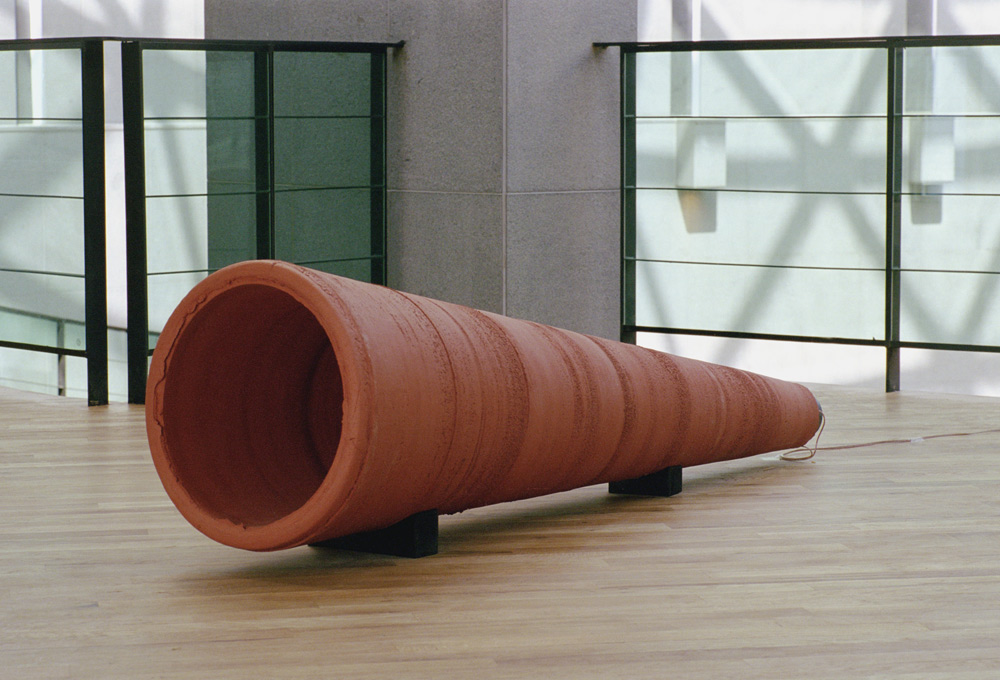
2006 International Architectural Exhibition, Clayarch Gimhae Museum, Korea
Sound Funnel, 2002, ”Sounds of Clay”, fired clay, speaker driver, 210 X 55 X 55 cm
2006 International Architectural Exhibition, Clayarch Gimhae Museum, South Korea
Breath
Sounds of Clay (Ton in Ton)
Ton macht bei seiner Bearbeitung Geräusche – auf dem Tisch, im Mischer, beim Schaben gegen Schablonen oder als gebrannte Scherben. Es quietscht, dröhnt, gluckst und kratzt. Man hört lustvolles, fast schon obszönes Geschmatze und Geschlürfe, saugendes Schnalzen und Quatschen.
Ich habe solche Geräusche bei meiner Arbeit im European Ceramic Workcentre in ´s Hertogenbosch in den Niederlanden aufgenommen und lasse sie aus meinem ersten wirklich großen Schall–Trichter ertönen. Die Arbeit stellt so akustisch unter anderem auch den Prozess ihrer eigenen Entstehung dar.
(Robert Morris gewidmet)
Sounds of Clay
Clay funnel with sound of its making
This work refers more to the clay and the different sounds of it while being worked at. In the German language the titel of the funnel work group is ”Ton in Ton”. The word ”Ton” has two meanings in german language: The first meaning is ”clay”. It also means ”tone, sound”. Thus the title of the project is a word game.
The funnel was built up on a potters wheel, turning against wooden templates fixed at the wall beside. Out of its mouth, the sound of the scratching of templates on clay and other clay-sounds are to be heard. The conception creates a self referring circle consisting of the object and the sound of its making.
(Homage á Robert Morris)
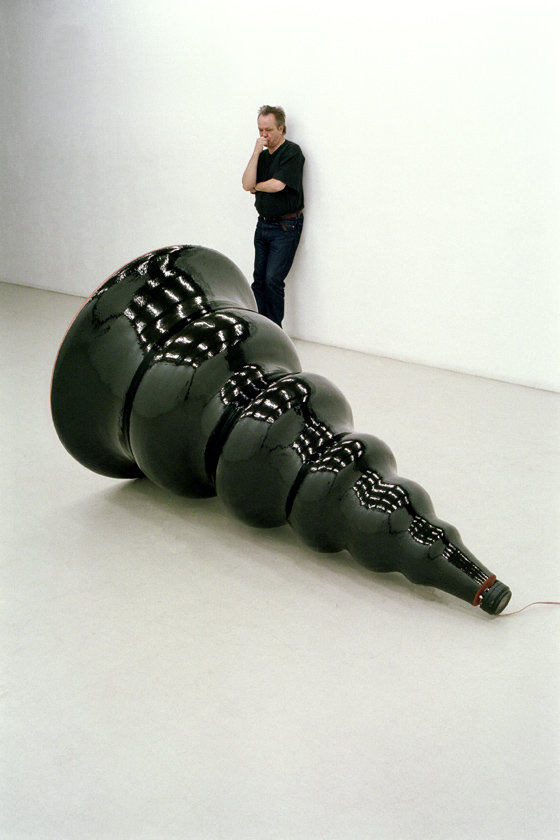
Galerie Rachel Haferkamp, Köln
Sound Funnel I C E, 2004, fired clay, glazed, speaker driver
approx. 180 X 120 X 120 cm, Rachel Haferkamp Gallery, Cologne
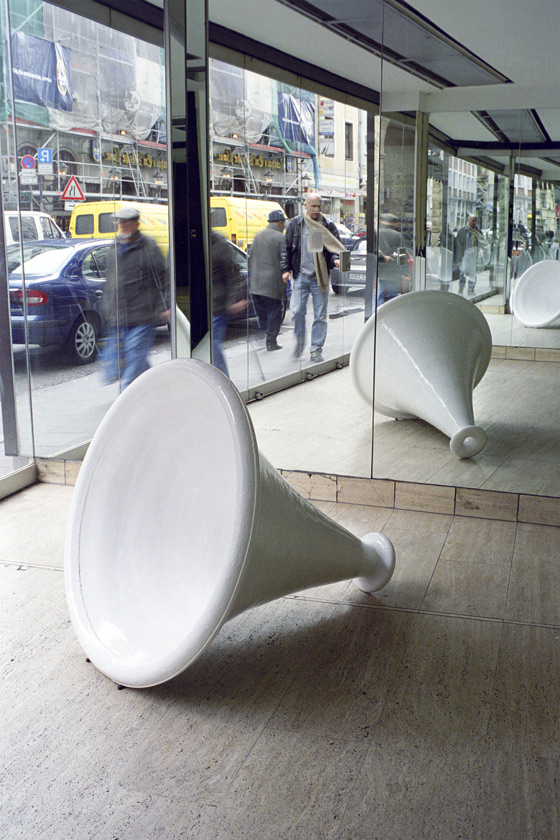
120 X 120 X 120 cm, Galerie Rachel Haferkamp, Köln
White Sound Funnel, 2002, fired clay, glazed
120 X 120 X 120 cm, Rachel Haferkamp Gallery, Cologne
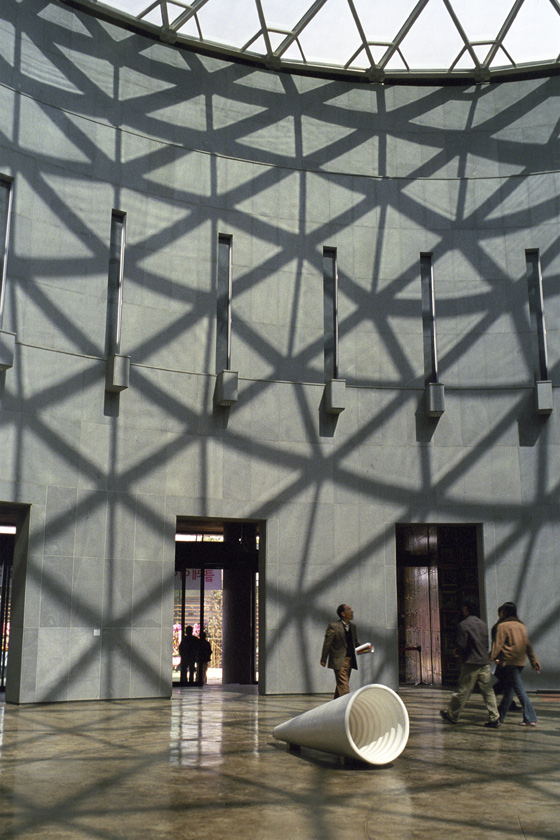
220 X 60 X 60 cm, Clayarch Gimhae Museum, Korea
Sound Funnel, 2006, fired clay, glazed, speaker driver
220 X 60 X 60 cm, Clayarch Gimhae Museum, South Korea
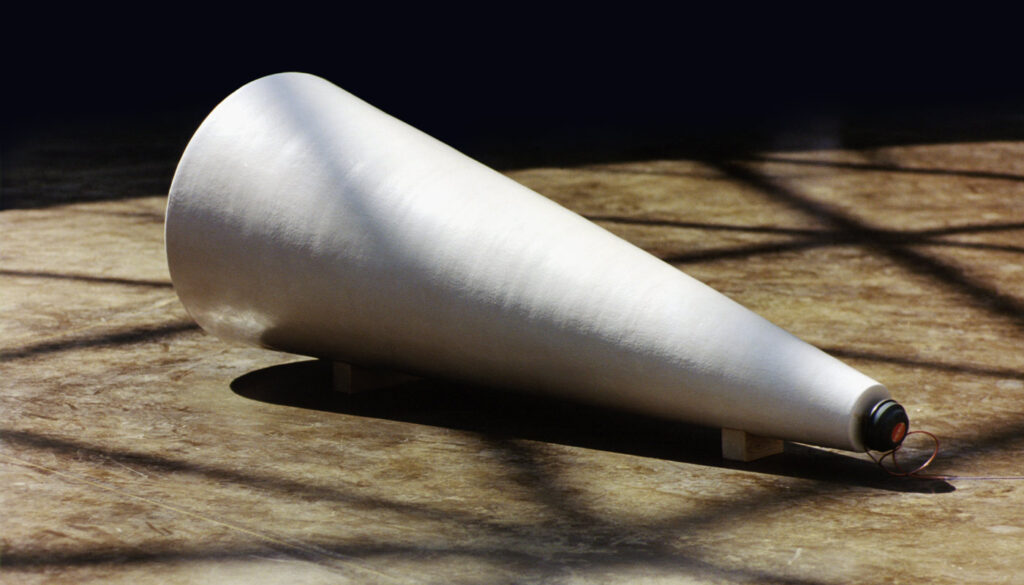
Sound Funnel, 2006, fired clay, glazed, speaker driver, 220 X 60 X 60 cm
Schalltrichter
2002–2005
(…) Die „Schall-Trichter“ sind zunächst eigenständige Plastiken aus Keramik. In ihnen wird die Form auf ihren funktionalen Gehalt hin untersucht und mit ihren inhärenten Inhalten gespielt. Sie besitzen eine Art Physiognomie. Ihre Form lässt imaginäre Rückschlüsse zu auf den Schall, der aus ihrer Öffnung dringt oder dringen könnte. In ihrer Drehung um eine Achse sind sie unendlich, während ihre Gerichtetheit entlang dieser Achse eindeutig ist: vorne und hinten.
Sound Funnels
2002–2005
(…) In the first instance, the sound funnels are discrete ceramic sculptures. With their help, the shape is explored with regard to its functional content, and its inherent possibilities are played with. They have a sort of physiognomy. Their shape allows imaginary conclusions with respect to the sounds that emerges from or could emerge from their opening. In their rotation around their axes they are indefinite, whereas their orientation along these axes is definite: back and front.
Dr. Gabriele Uelsberg, in: Katalog zur Ausstellung „Klaus Osterwald“ im Rheinischen Landesmuseum Bonn, 08.02. – 18.03.2007